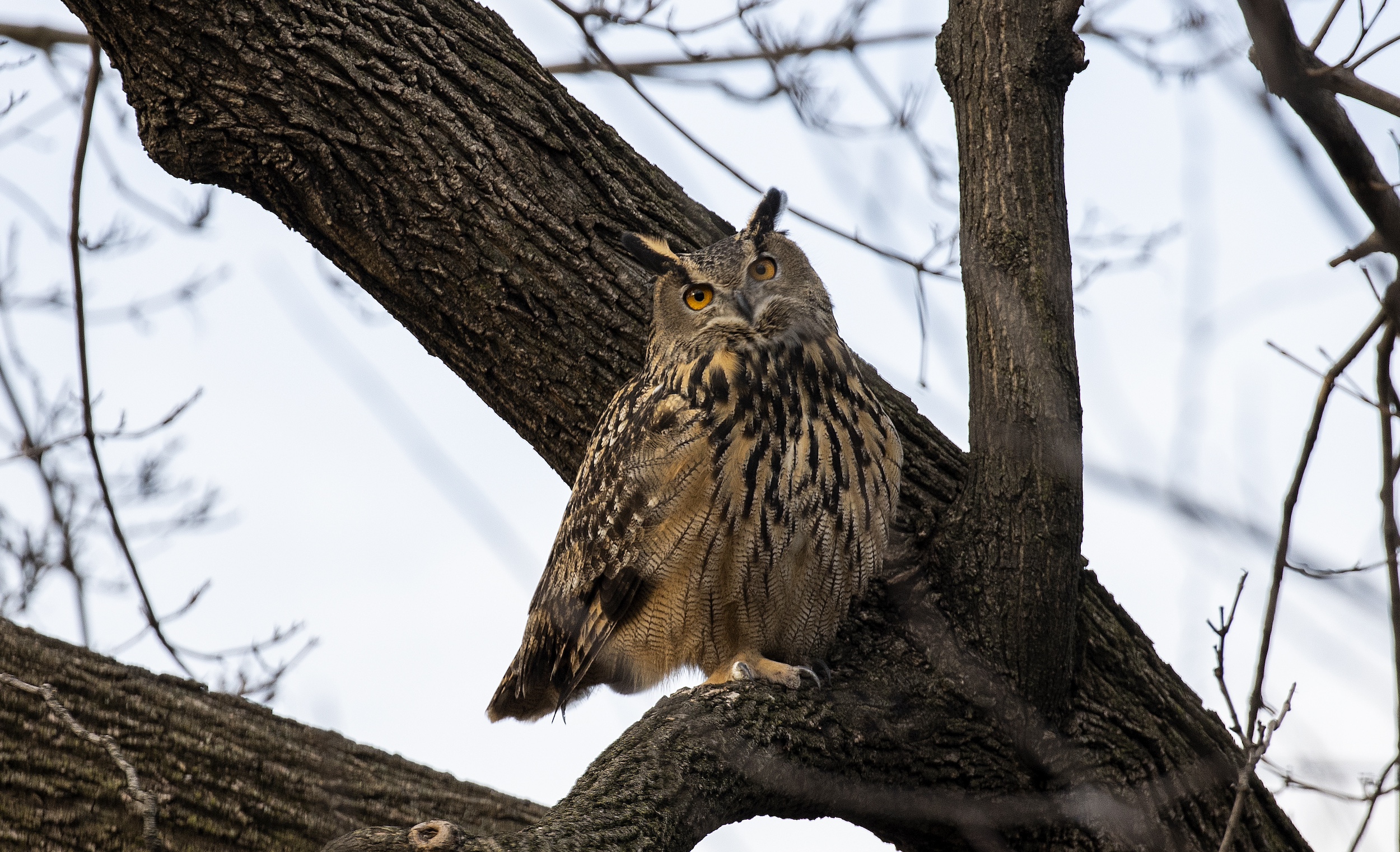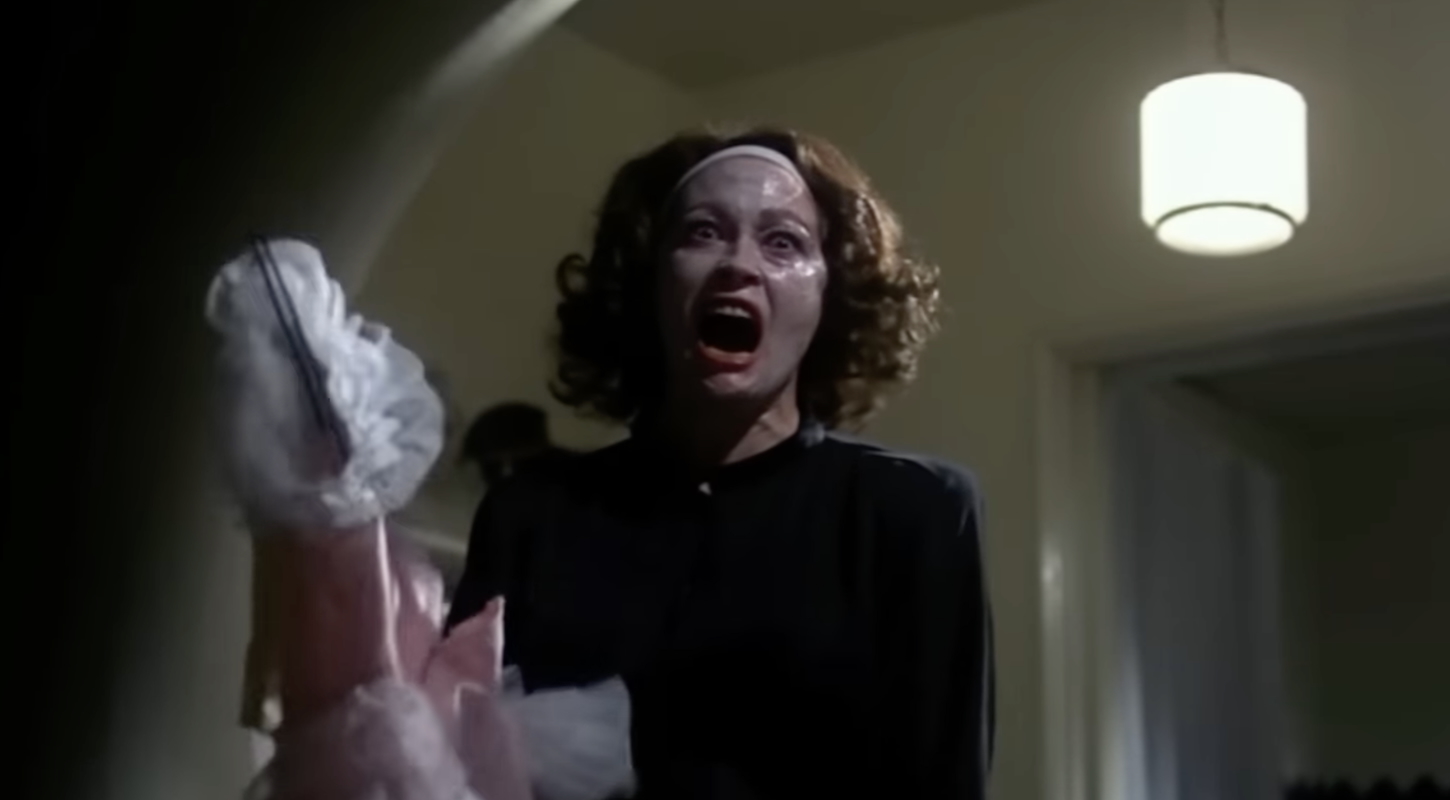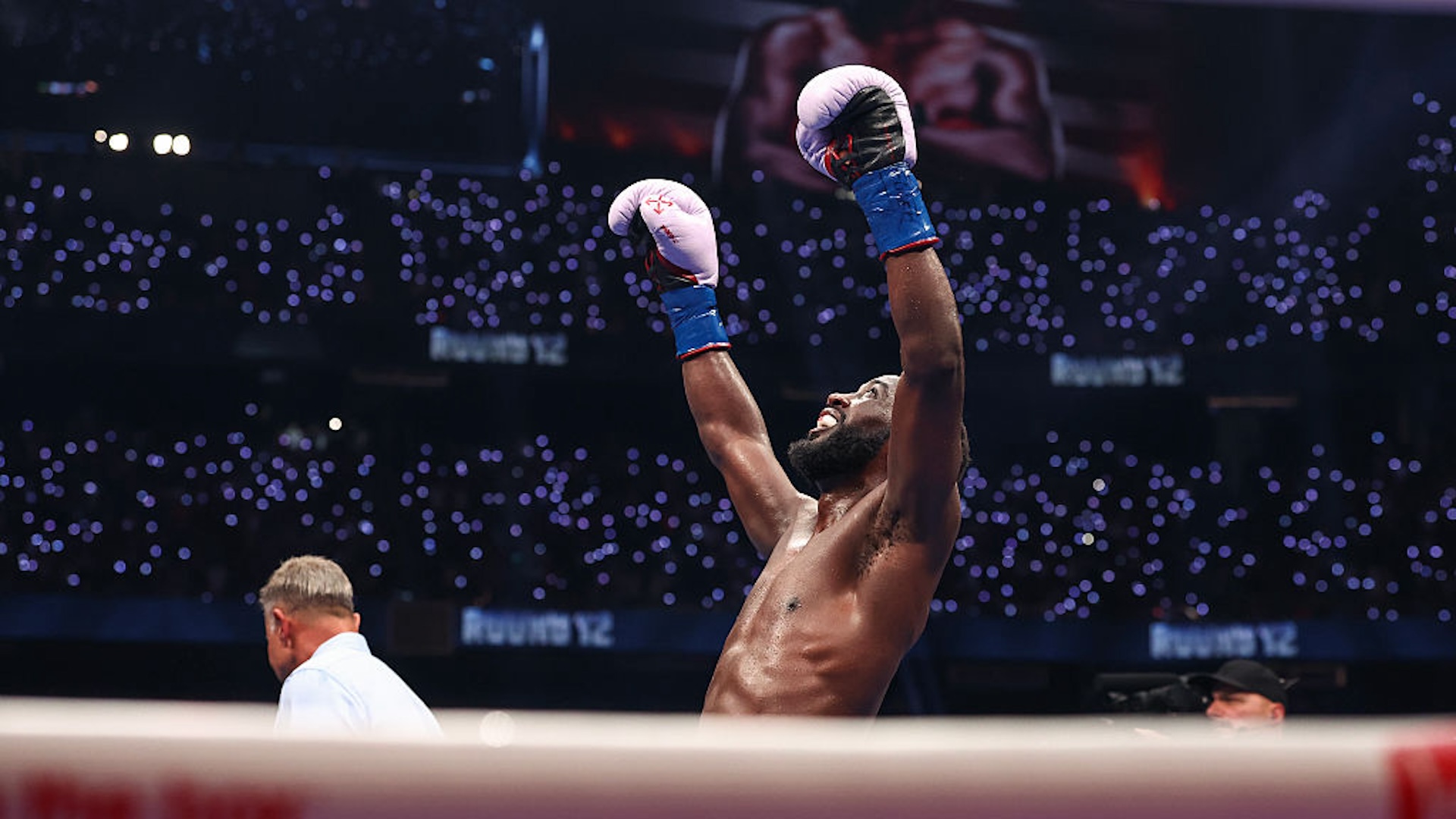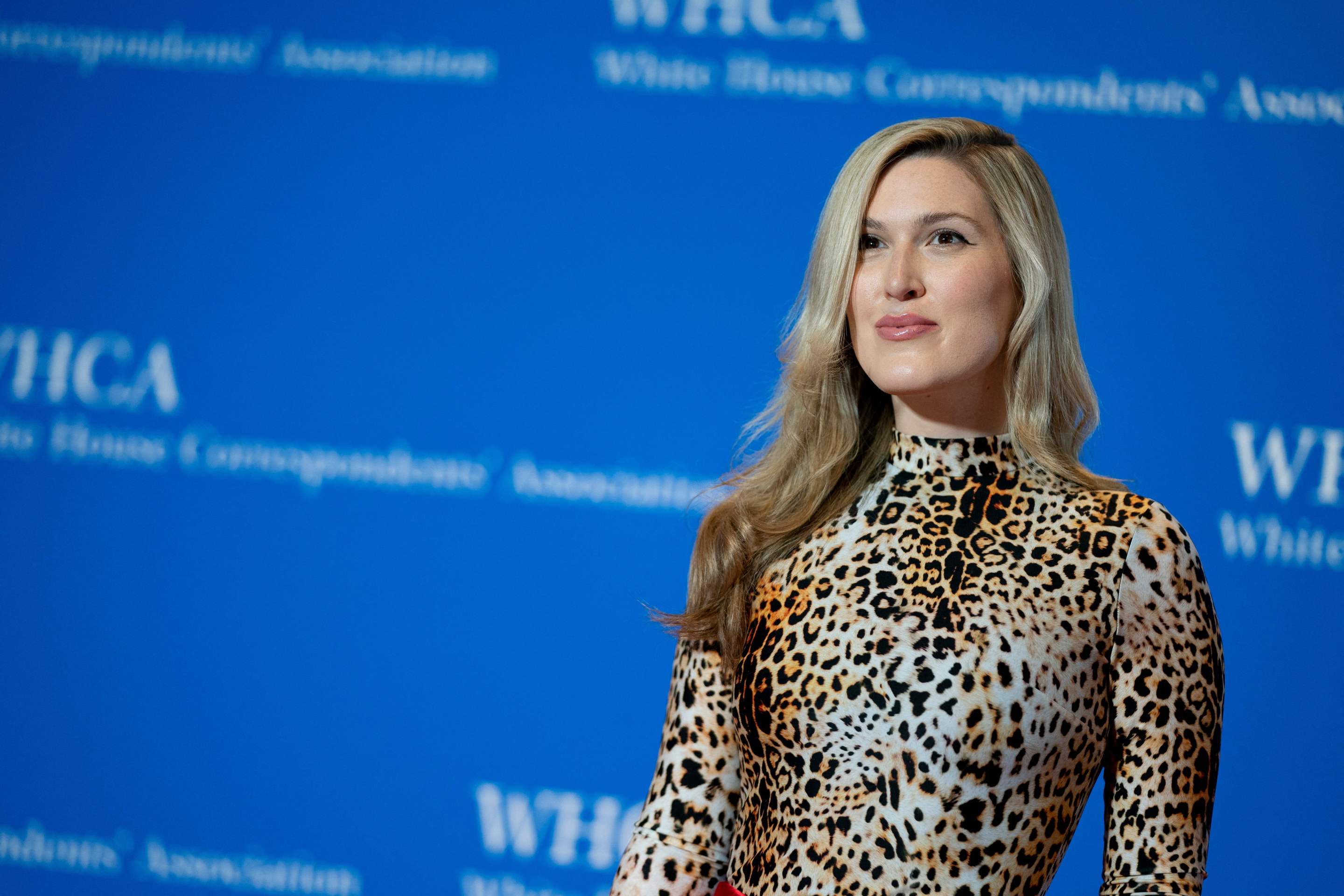He looked like a deflated football stuck in a tree. That was my first in-person impression of Flaco the Eurasian eagle-owl: a soft, unmoving, tannish-brownish lump wedged in the crook of an elm tree in the northern reaches of Central Park. Not a used football; just a sleepy owl. I knew I had found him, even if the thing I had found didn't yet look much like the bird I was looking for. I knew because there were a couple dozen other people already there, binoculars and cameras enfilading him in the hour before dusk, when he would rise and stretch and commence his nightly fly-out to begin another shift on the job in the big city. Everyone was there for him. He didn't appear bothered. Flaco was a star.
Since his prison break from the Central Park Zoo in February, Flacco has been thriving in the park. But it seems he wanted more. After nearly a week of no sightings in his usual locations, well-wishers had started to worry. On Monday Flaco finally turned up, wholly unexpectedly, in the East Village, in a small community garden surrounded by concrete and five miles away from his old roost. There was speculation that he had been spooked by fireworks this weekend, or that he had gone in search of a mate. That last one is a rather depressing scenario—there are no other wild Eurasian eagle-owls in this hemisphere. It's unlikely, though not impossible, that the little dude will ever make his way back to Central Park and its safe, leafy trees and large, juicy rats. There's a whole big world out there to explore.
Flaco looking back from a rooftop on East Third St. before flying east last night. He continues to astonish us. I hope he stays safe.💕🦉#birds #birdwatching #birdcpp #flaco pic.twitter.com/DE01Y2G1Tk
— JacquelineUWS (@jacquelineUWS) November 7, 2023
Flaco is the latest and perhaps most famous of New York's celebrity birds, a distinguished lineage dating back at least as far as Pale Male. It's not hard to see why they capture so much attention—we're fairly starved for wildlife in the concrete jungle. Things are getting better. The clean-up of the Hudson River over the last 40 years has been nothing short of miraculous. Three of our boroughs, including Manhattan, are home to coyote populations. Every once in a while a nutria from the Bronx River will wander into a bodega. But those are local wildlife pushing back into territory we took from them; Flaco's species doesn't even belong on this continent.
And Flaco had the added bonus of being an underdog. After a dozen years of captivity in a bleakly small zoo enclosure, no one was sure if this owl even knew how to hunt for himself. After an abortive and scary visit to Fifth Avenue, and a few foiled recapture attempts by zoo staff in which he outsmarted their traps like something from a Chuck Jones cartoon, Flaco proved that not only did he still have hunting instincts—he was very, very good at it. No rodent was safe from New York's new rat czar.
At age 13, Flaco is no spring, uh, owlet. But he settled quickly into the rhythms of his new life. The evening fly-outs, and the squirrel breakfasts. Getting harassed by local blue jays, a rite of passage for any raptor. Realizing how useful construction machinery is as a perch from which to watch for prey. Making himself at home in a favored tree that'd change every few weeks—he preferred elm and oak. Learning that discretion is often the better part of valor, but also that he doesn't need to take shit from every hawk trying to look tough.
Owls live solitary lives, but Flaco had an entourage—the birders who came every day to seek him. He was a social event. You'd meet the same people again and again, and chat about what you'd been up to since the last time you were both in his presence. Friendships and romances were forged at the foot of Flaco's trees. The birding community in New York is large but widely flung, and in Flaco it found both a focal point and a draw for newbies. I am decidedly a newbie, but I always felt welcomed to spend a few minutes with him and his fans.
I had another, more personal reason for feeling a connection to Flaco: He was in my old backyard. I grew up a couple blocks from the park, but not the southern, better-trafficked and more touristy part that most people think of when you say Central Park. That part of the park is all broad paved paths and manicured lawns. My slice of the park was something wilder, more overgrown, quieter. In my slice of the park you could wander along a gently flowing stream, down a rocky ravine, and not see or hear another human being. You could pretend you were in an untamed swath of the Adirondacks, as Olmstead and Vaux intended. You could scale the remains of an old artillery battery built to keep the British out of the city. You might stumble across a natural spring left in the park, the cold water bubbling up next to a rock with an iron ring embedded in it, which once held a ladle from which thirsty travelers could drink. My Central Park was a place of secrets and wilderness, of clean water and trees so thick they blot out the sun. I found joy in knowing that Flaco and his fans were discovering this lesser-known idyll where I had spent so much of my life. Where else would an owl choose to live?
This owl, it seems, has chosen to live in the East Village for now. This is not a positive development if you care about Flaco's well-being. An urban owl's biggest threats are cars and rat poison—the last celebrity owl died by both. Central Park is mostly free of vehicles, and the Central Park Conservancy doesn't use rodenticide. But out in the city itself there are no such guarantees. One hopes this is just a stopover for Flaco on his way to some other green oasis. One hopes he wasn't making a poor choice when he left his relatively safe perch in the park. But at least it was his choice. After spending his life in a zoo, he's learning that freedom has no bounds, that now only his imagination can pen him in. The world is dangerous, sure. But at least that world can be his, in all its perilous glory; after all, he's a wild animal and a free bird.







